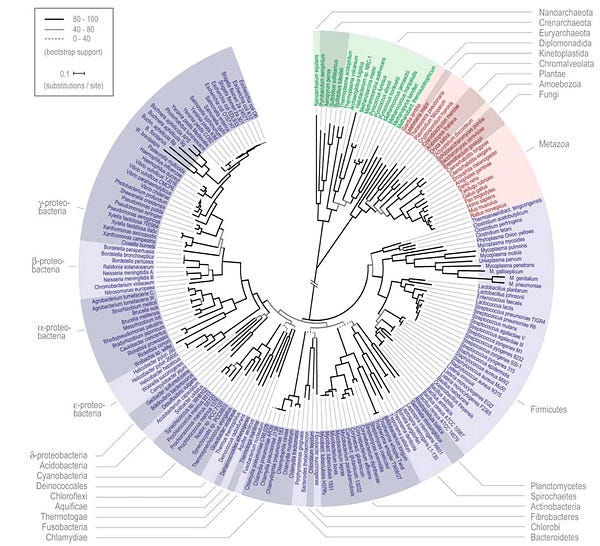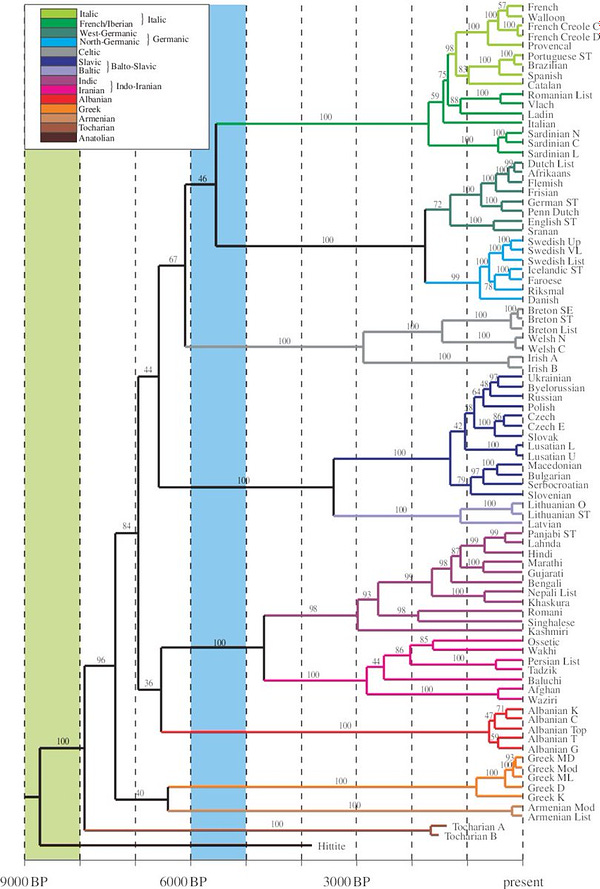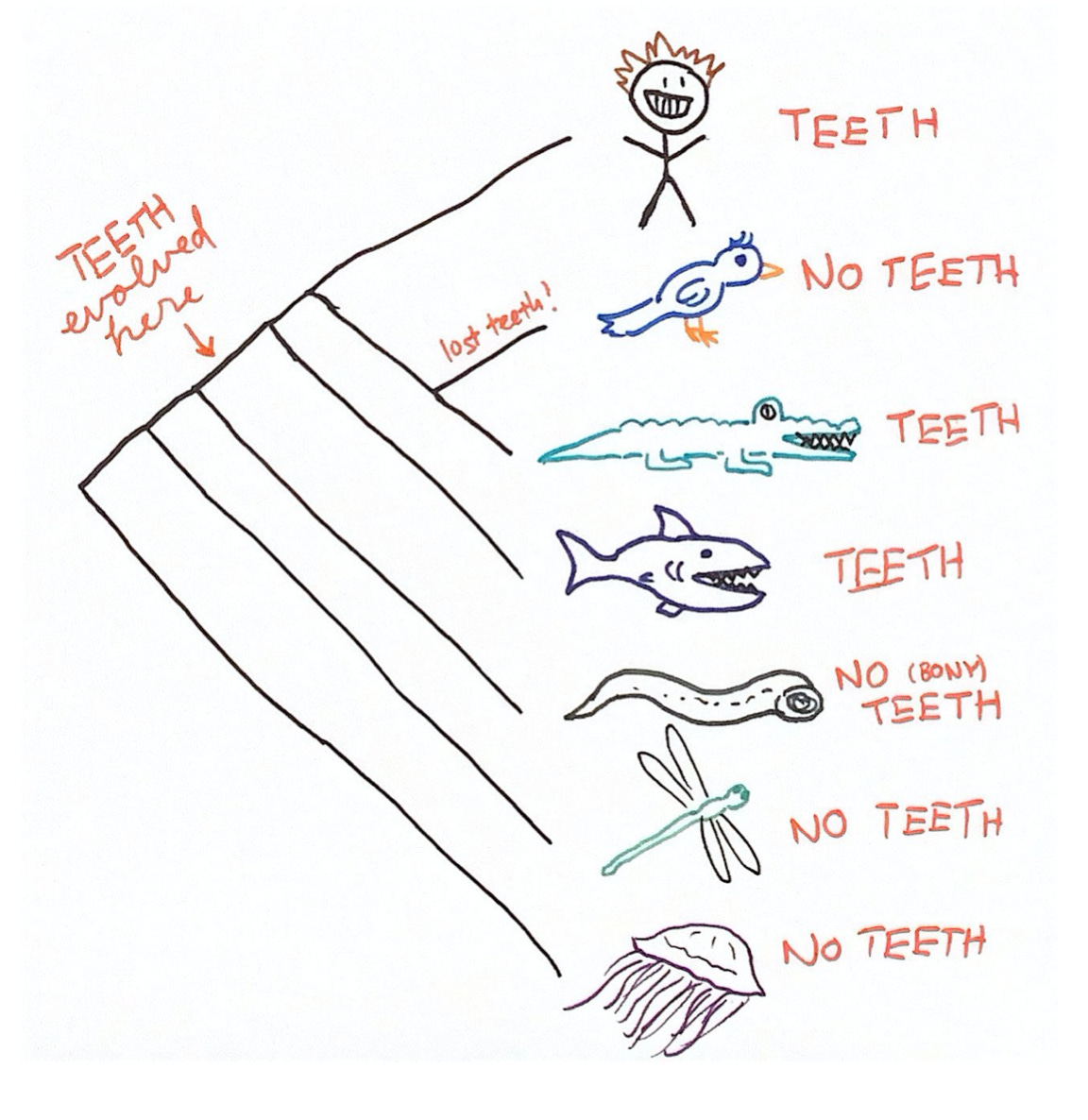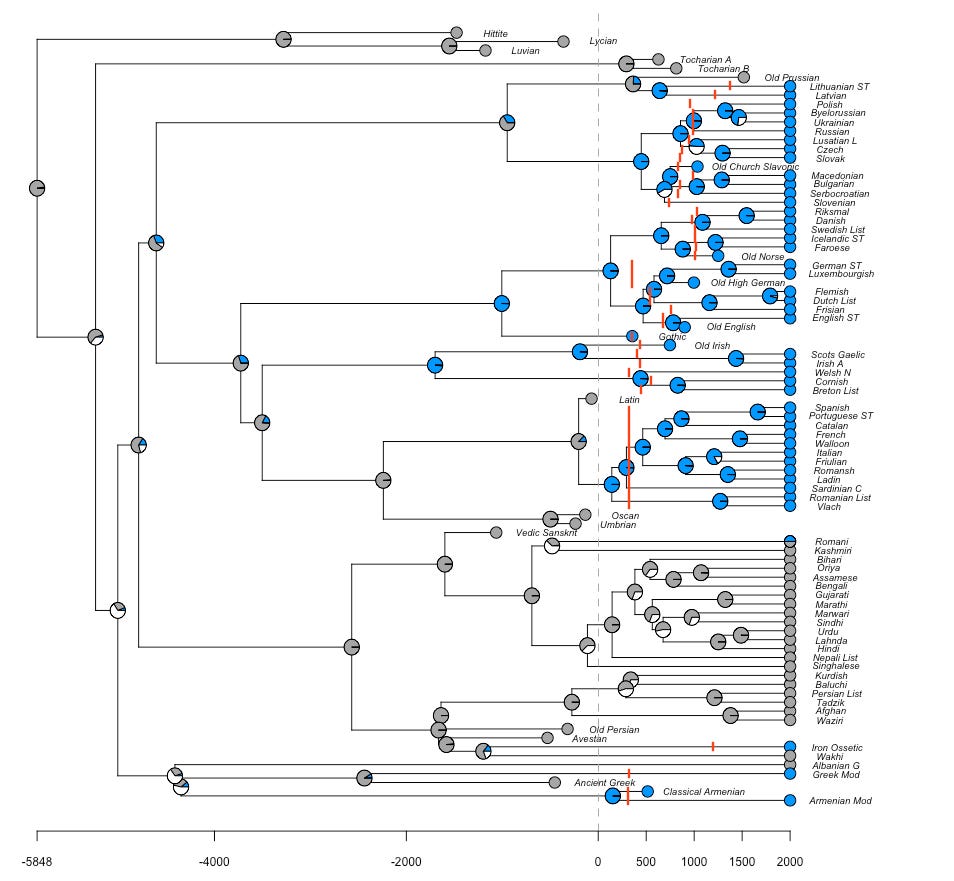The Evolution of My Evolutionary Thinking
That time I "proved" that Europeans were Christian 2000 years before Christ 🐟
Good day!
Welcome to issue #9 of Light Gray Matters! Today, following last week’s post, we’ll explore the boundary between biology and culture.
Back in 2016, when I was a student in evolutionary biology, I spent a semester at the lab of one of the foremost scholars of cultural evolution, Joe Henrich. My research project was pretty much all about merging together biology and culture: I attempted to use methods from biology and apply them to cultural ideas, such as religion, and see what happens.
What happened was that it didn’t work.
But worry not — that was kind of the point of the project. To show that nonsensical results can occur.
Take a phylogenetic tree, i.e. a bunch of lines showing the evolutionary relationship between species. In biology, once we’ve established what a tree looks like, we can infer the evolution of some characteristic based on the state of current species (or extinct species, if we have fossils).
For instance, this extremely rigorous example about teeth:
We can be pretty confident that teeth evolved in the ancestors of sharks and fish and terrestrial vertebrates. The closest relative of this group, the lamprey, doesn’t have teeth. (Well, technically speaking. It does have keratin teeth-like structures that are not made of bone. Please trust me. Thank you.) But most animals within that group of related species do have teeth — although some lost them, like birds and turtles.
My cultural evolution project was to use the computer methods that allow us to perform this inferences, and apply them to cultures instead. I used trees of languages as a proxy for cultural groups.
So here’s some output of my 2016 work that I hunted down in some deep folder of my computer. It’s a tree of Indo-European languages:
What’s going on here? Using very state-of-the-art methods like reading Wikipedia, I determined whether the cultural groups speaking the languages on the right were mostly Christian (blue) or not (grey) or ambiguous (both). Then I used a computer program to reconstruct the probability of being Christian for all the ancestors of those groups. The bluer an inner circle is, the most likely it is to be Christian according to this analysis.
But notice the red bars and the grey dashed line. The red bars are the approximate dates of conversion to Christianity, and the dashed line represents the birth of Christ.
My beautiful tree therefore informs us that the ancestors of current Germanic and Celtic language speakers were Christians thousands of years before the birth of Christ.
Yeah.
In science, it is said, negative results are as important as positive ones.
So, was I hailed as a hero for debunking the indiscriminate application of methods from evolutionary biology to anthropology?
Well, no. All of that was right before I decided to give up on an academic career and never look back. My small pilot study never went anywhere.
But the ideas — that biology and culture are alike in many ways, and different in others — have stayed with me. They were frozen in my mind, awaiting better days. And in these past few months, they sprouted once again.
From discussions with friends (like Sachin Maini), I realized there aren’t that many people talking about cultural evolution. It’s less of an obvious idea than I used to think. So I’ve been wondering if it might be the solution to a question that’s been plaguing me ever since I started writing online:
What is my niche?
Anyone who creates or sells something must ask themselves this question. What is that specific, unique thing you can bring to the world? What is the small part of the global market that you can serve?
What’s fun about the idea of the niche is that… it’s in itself an analogy with biology! The concept comes from ecology, and describes the relationship between a species and its environment.
I could write a whole post about that, I think. And about the common idea, for online writers such as yours truly, that you need to “find your niche.” And whether evolutionary thought might actually be my niche.
Actually, you know what? Let’s do exactly that next week.
And to make sure you don’t miss the next part of this excellent discussion, subscribe here! (Yes, I am actively trying to spread the Light Gray Matters meme.)
Until then, I remain
Darwinianly yours,
Étienne
On Twitter: Stuff actually relevant to the post above
On Monday, while waiting for a flight, I wrote a quick thread on some analogies between biology and culture, such as mutation vs. innovation, gene vs. meme, and so on. (My Twitter bio says I’m an “evolutionary thinker,” so I need to play the part)



And we end with another attempt by me to spread the Light Gray Matters meme:






